Guiding Students Through College’s Unwritten Rules
Imagine a student who approaches you after class, noticeably confused. “I tried to attend your office hours yesterday,” they explain, “but when I got to the classroom, I couldn’t find you. Instead, another class was in session!”
At first thought, you may be frustrated that the student did not understand the location of “office hours,” which seem obvious by the name. But if you step back and view this from the perspective of a student fresh out of high school, you can see the confusion. In high school, if you needed help, you would go to the teacher’s desk IN the classroom. This simple mix-up reveals a critical part of education that deserves our attention in higher education: the hidden curriculum.
First introduced in his 1968 book Life in Classrooms, Philip Jackson defined the “hidden curriculum” as a set of unspoken or implicit rules, values, behaviors, and norms within the educational environment that are needed for academic success. The hidden curriculum is not formally taught like the standard curriculum or textbooks. Instead, it is learned as part of the everyday interactions students have with their peers and their instructors, and their school’s practices and culture. It is how students know to raise their hand to ask or answer questions, socialize with peers, and that the teacher is the authority. It is the skills, dispositions, and behaviors that help students succeed in both academics and in “real world” situations where soft skills are just as essential as content knowledge.
Impact on Our Students
As students move from high school to college, they become part of a new educational environment, with its own set of unwritten rules and behavioral norms. Most students navigate the hidden curriculum of college campuses by using what they have learned in high school, including interacting with professors, completing homework on time, and participating in class discussions and team projects. Because learning these unwritten behaviors and norms depends on the dominant cultural context, the hidden curriculum disproportionately affects students without college-educated family members, those from different cultural backgrounds, and some neurodivergent students. These students may not have the school exposure, social networks, or family members that have gone through the college experience to help them learn the norms for college success.
In an impactful article illuminating hidden curriculum challenges through student interviews, Anthony Abraham Jack describes how different high school experiences and upbringing influence the way students navigate college. One student mentions,
My being uncomfortable going to office hours: that’s the [social] class thing. I don’t like talking to professors one-on-one. That’s negative because [this school] really wants you to be proactive. And raise your hand. And talk. Freshman year, I didn’t say a word. People who I had small classes with, if I see them on the street, I recognize them. They won’t recognize me because I didn’t speak. (Jack, 2015)
In this example, a lack of understanding or discomfort with the expected behaviors in college classrooms--such as answering questions, participating in discussions, and self-advocacy--became a barrier to the student feeling part of the campus community.
The hidden curriculum also influences student academic success, as they must have the skills to complete curricular tasks and the behaviors to engage in the learning process. Consider a group assignment where students work together to solve a real world problem. Before they can even begin, students need to know the unwritten expected behaviors for teamwork, such as taking turns when sharing ideas, setting roles, accountability, participation, and respect. The hidden curriculum also includes other aspects of college preparation including knowledge of how to navigate academic systems such as financial aid processes and registration, and use of resources such as advising or tutoring. See a more comprehensive list of hidden curriculum considerations.
Tips to Demystify the Hidden Curriculum
We can support the success of all students by not only recognizing our institution’s hidden curriculum, but also by intentionally “unveiling it.” For example,
- Create an inclusive syllabus: Use inviting language and explain key elements like “office hours,” which can be renamed to “student hours” for clarity. Explain how to use the syllabus and check for understanding with a syllabus quiz. See our Syllabus Guides for a checklist and syllabus template.
- Define academic jargon: Make sure students understand what you mean by terms such as “critical thinking,” “analyze,” or “class participation.” Share our university lingo.
- Use transparent assignment design: Provide learning outcomes, clear directions, and rubrics that define how students will be assessed, an approach developed through transparency in learning and teaching (TILT).
- Provide and normalize use of campus resources: Include campus resources as part of class communications and avoid stigmatizing language (e.g., Normalizing and Promoting Academic Success Support, Asking for Help Shows Strength, Not Weakness).
- Model the behaviors you expect from students: Provide feedback to reinforce your expectations, use a growth mindset approach to handle mistakes constructively.
- Promote a sense of belonging: Provide a safe learning environment, valuing all students' backgrounds and individuality. This will allow them to gain confidence in new social situations.
Conclusion
We have the opportunity to make it easier for students every time they encounter one of these unwritten rules. By being mindful of how they show up in our classrooms and campus, we can guide them with the information and tools to “demystify” the hidden curriculum.
Resources
Gable, R. (2021b). Rachel Gable, author of The Hidden Curriculum, PUP Speaks. Video created by Princeton University Press.
Jack, A. A. (2015). (No) Harm in asking: Class, acquired cultural capital, and academic engagement at an elite university. Sociology of Education, 89(1), 1-19. (Original work published 2016)
Mintz, S. (2024, May 16). How the “hidden curriculum” prepares students for post-college life. Inside Higher Ed.
Replogle, J. (2022, April 26). You can succeed at college once you figure out all the little things no one tells you about. LAist.
Save and adapt a Google Doc version of this teaching tip.
About the Author
Sarah Hosch is the Faculty Director of the Center for Excellence in Teaching and Learning and a Special Instructor in the Department of Biological Sciences at Oakland University. She teaches all levels of biology coursework and her interests include evidence-based teaching practices to improve student learning gains and reduce equity gaps in gateway course success. Sarah loves exploring nature, cooking, and exercising.
Others may share and adapt under Creative Commons License CC BY-NC.
Receive Weekly Tips view all teaching tips Submit a Teaching Tip
Tags:






